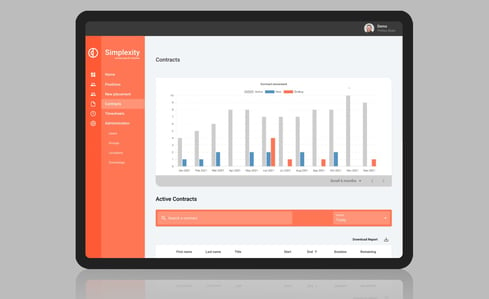Managing a contingent workforce can be a strategic move for organisations looking to stay flexible and control costs. However, navigating the complexities of contingent workforce management requires careful consideration and the avoidance of common pitfalls.
Here we highlight some of the most prevalent mistakes that organisations make when handling contingent workers and explore effective strategies to optimise cost savings.
1. Neglecting Strategic Workforce Planning:
One of the primary mistakes organisations make is overlooking the importance of strategic workforce planning when managing a contingent workforce. Failing to align contingent staffing with overall business objectives can result in misalignment and increased costs. By integrating contingent workforce planning into the broader organisational strategy, companies can ensure that their contingent staff complements and enhances the core workforce. Click here to read more on Contingent Workforce Programs - what they are and why every company should have one in 2024
2. Inadequate Vendor Management:
Effective vendor management is crucial when working with recruitment firms, staffing agencies, outsourcing partners, and other third-party service providers involved in the acquisition and management of your contingent workers. Many organisations make the mistake of not thoroughly vetting and managing their contingent workforce vendors. Establishing clear expectations, communication channels, and performance metrics can prevent misunderstandings, ensure quality talent acquisition, and help negotiate better rates, ultimately contributing to significant cost savings.
3. Ignoring Compliance and Legal Considerations:
Hiring contingent workers is proven as an effective way of lowering your workforce costs and injecting much needed talent and flexibility in your operations. But compliance issues can inevitably arise when managing a contingent workforce, especially when it comes to labour laws, tax regulations, and other legal obligations. Failing to pay attention and stay abreast of compliance requirements can lead to penalties and increased expenses. A proactive approach to compliance, including regular audits and legal consultations, is essential to avoid costly consequences.
4. Lack of Technology Integration:
Technology plays a crucial role in optimising contingent workforce management. Often organisations make the mistake of not leveraging advanced workforce management tools and technologies. By implementing robust systems for tracking time, managing performance, and analysing data, companies can enhance efficiency, reduce administrative overhead, and make informed decisions that positively impact cost management.
5. Failure to Foster Collaboration and Communication:
Smooth communication and collaboration between the core workforce and contingent workers are often underestimated. When there is a lack of integration and clear communication channels, productivity is very likely to suffer, leading to increased costs. Establishing effective communication strategies and fostering a sense of inclusivity among all workers, regardless of employment status, can vastly improve overall team performance and ultimately contribute to cost savings. To read more about optimising the important relationships you have with your contractors click read 9 Best Practises to Optimise Successful Contractor Relationships
6. Sticking with the status quo, resulting in missed opportunity
Contingent workforce management is becoming more important than ever with the rise of flexible on demand workers in the market. Yet, so many companies simply rely on and implement programs they've always had, without reviewing emerging models and adapting new ways of managing and optimising their CW programs on a regular basis resulting in so many missed cost-saving opportunities. With most programs and supplier contracts spanning two to three years, companies risk overlooking potential efficiencies and performance improvements by sticking to outdated models.
Companies should be continually researching and reviewing their programs every year, as they really can’t afford to be complacent. Embracing change and proactively seeking innovative solutions is essential for staying ahead of the curve, achieving optimal performance and really maximising the benefits of contingent staffing.
-----------------------------------------------
If you want to get the most out of your contingent workforce in 2024, you need to make sure the tools you’re using to source, engage and manage them are up to the job. If you would like to hear more about the type of modern technology there is out there to assist you, or would just like some extra help and advice on how to manage your contingent workforce this year, then get in touch with Oncore to discuss your specific requirements.
Together, we can ensure your enterprise thrives in this new era of work, harnessing the power of the best remote teams and systems to cut costs and to drive success and innovation. Contact us today












_11zon%20(1).jpg?width=302&height=124&name=linkedin-sales-solutions-vqWWOnA6--M-unsplash%20(2)_11zon%20(1).jpg)






